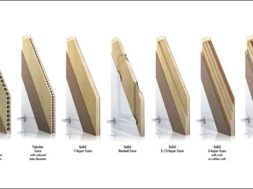“This traditional Haat of contemporary times is a rich, earthy play of colour and texture, and one can experience intimate spaces designed to human scale as well as the grandeur,” says Sourabh Gupta, Managing Director, Archohm Consults Pvt. Ltd.
Archohm is popular for developing a bouquet of self-sufficient facilities and functions that lend each other a certain support system. Architect Sourabh Gupta shares the uniqueness of their dream project Dillihaat in Janakpuri.
Delhi, being the national capital region, has been host to the development of various cultural hubs. Also, the historic Delhi has been always a prominent cultural centre. Hence, cultural centres have always been important to this city. A new addition to this already thriving cultural jamboree was Dilli Haat — a huge success from its inception — at INA near AIIMS in 1994. This was followed by Dilli Haat at Pitampura in north central Delhi and now another Haat at Janakpuri in west Delhi.
Socio-economic impactsThe project attempts to empower artisans, bringing art and craft from the villages to the city with no middle men to ensure authenticity and profitability.
Relishing challengesDesigning Dilli Haat was a challenge to relish because of the huge popularity of the enterprise. It was a competition entry called by Delhi Tourism. The construction began in August 2011 and is expected to complete in February 2014. The project comprises of two adjacent sites, which are a part of a huge green belt. Dilli Haat occupies the larger 6-acre site whereas the smaller site has a proposal for a youth hostel or hotel and parking facilities. The site is located in the densely populated residential area of Janakpuri. It is very well connected by public transport, especially after the introduction of the new metro link. For outstation visitors, railway and air connections are quite convenient too. It was a great opportunity to develop Haat in west Delhi as it does not enjoy adequate centres of this kind; the main melting pots being south and central Delhi. Here was a chance to create another nucleus around which cultural life in west Delhi could thrive. At the same time, it was a challenge to retain or replenish the green cover, while taking up extensive building work.Archohm, taking cognizance of all the requirements, so as to make the Haat functionally viable program, decided to give a music theme to the centre. The lack of any centre dedicated to music came glaring while doing research, and soon the theme of ‘haat beat’ gathered momentum.
The layoutOutdoor shops with roofing canopies and craft shops to hold artisans workshops are integral to the Dilli Haat theme. Air-conditioned shops were added to make it a more viable shopping experience. There is also a children’s play area tucked into a small green patch. The food court with basement parking facilities ties it all together to sustain as an enterprise. Like a well-crafted movie, the strength of this project is that the plot is strong, and the basic idea is immersed well in every aspect extensively. The site plan is knit together efficiently. Free-flowing open spaces bind various activities on two levels. The main pedestrian and vehicular entries are from a busy street. There is a separate service entry and a couple of special entry points. A large open space takes the visitor through a frisking area to another pocket that leads to the huge central plaza formed by meandering air-conditioned shops and the exposition halls. One can also take the open pedestrian ramp to reach the terrace lined by canopy shops. From the frisking area, there are direct access points to the café, surface and basement parking and banquet greens. The central plaza culminates to the auditorium and the craft-shops cluster, the most popular activity which clusters located at the rear end to enable the visitor to walk through the entire Haat. Another frisking area is located near these clusters as there is a strong possibility of craft shops to become the predominant function. The four 8-metre high towers are interspersed along the site. Designed to look like huge bamboo baskets, they are two-storied buildings with a rooftop canopy designed for outdoor activities. Closer to the entry, one basket houses the information centre, while the other forms a café. Wander more into the interiors of the site and the baskets house a music centre and a museum. The music centre will not just avail sale of all genres of rare classics, musical instruments but provides ample outdoor space and a small amphitheatre to take care of interactive functions.
The exposition halls are three linear vaults of ascending widths in plan, forming one large space that can be divided into three as required. Colourful flowering creepers that soften the scale and help temperature control further cover the steel sheeting on top. The food court will house 48 stalls from different places and celebrate the taste of India. The two-storied air-conditioned space is well supported with individual service courts for every stall, in turn opening into a larger service yard connected with separate access. The front wall of the food court, visible from the main access road, holds the huge signage keeping those interested updated on the happening inside.
A state-of-the-art auditorium with 800-seating capacity also forms an amphitheatre on top. The green, paved amphitheatre instantly reduces the huge mass of the auditorium and at the same time helps retain the green cover, helping in heat control.
Also, covered on top by canopied shops they make a bustling activity space lit up by shop signage and street sculptures. Circularly planned 100 craft shops are arranged in clusters of five-six, each forming a bazaar. These are built in the most natural stone masonry, covered with the most technologically advance tensile canopies. The clusters are connected with small green patches and paved allies, completing the village scene. The rear boundary wall is lined with informal platform shops overlooking this village.
Fresh outlookBreaking free of the convention look and feel of its other two counterparts with their brick vocabulary, Dilli Haat, Janakpuri takes a fresh look at the material palette as demanded by the multifaceted program that it houses. The material spectrum is an eclectic mix of modern and traditional. Using the timeless red Agra stone, kota stone, slate and the local Delhi quartz stone masonry on facades and landscapes, it sets a neat and natural typology to this predominantly green complex.
The one material that is being celebrated with its extensive usage is bamboo; structures for shading, screens for baskets and food court, sculptures for street furniture on one side and the natural growing ones as soft scapes of boundary plantations and accent trees on the other. Indigenous stones and plants coupled with contemporary mediums of steel and tensile canopies juxtapose themselves aptly. This traditional Haat of contemporary times is a rich, earthy play of colour and texture, and one can experience intimate spaces designed to human scale as well as the grandeur.
Dream projectDilli Haat in Janakpuri, New Delhi• Project cost: ` 90 crore• Developer: DTTDC • Architects: Suboor Ahmed and Arti Kulkarni• USP: Celebrating tradition and culture• Status: To be completed within six weeks
Cookie Consent
We use cookies to personalize your experience. By continuing to visit this website you agree to our Terms & Conditions, Privacy Policy and Cookie Policy.









